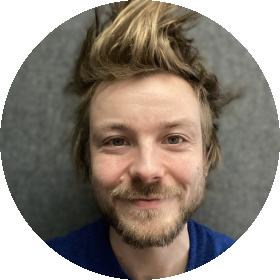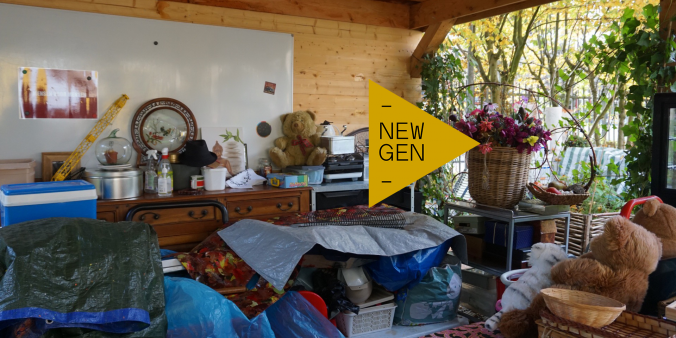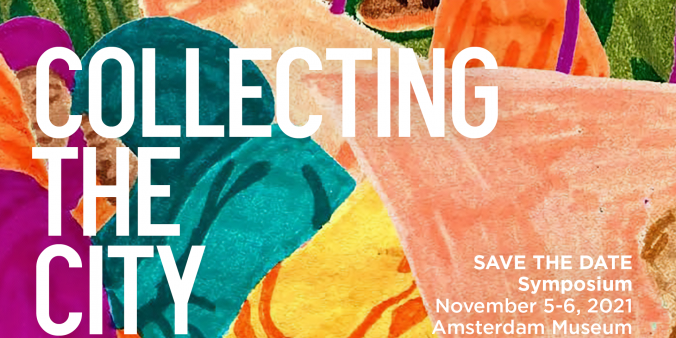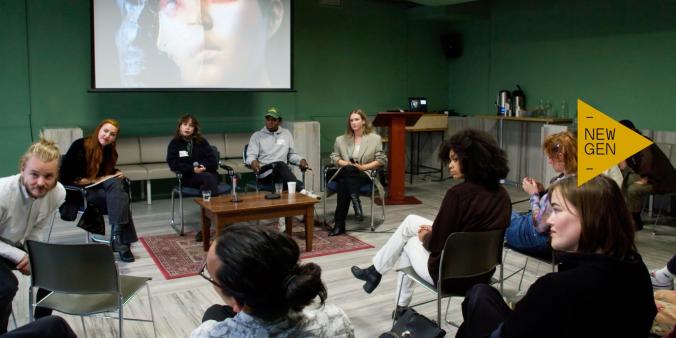Ahead of the city's 750th anniversary in 2025, the Amsterdam Museum has launched the collection project Collecting the City: Stories of Amsterdam. DutchCulture and the founding partners of Collecting the City (OBA, Municipality of Amsterdam, Amsterdam City Archives and the University of Amsterdam) organised a symposium on 5 and 6 November for museum professionals and makers - both local and international - to expand our knowledge about collecting stories and co-creation around the city. This is a recap of the Collecting the City tour through Amsterdam Zuidoost on Friday 5 November.
Start collecting
The first day of the Collecting the City symposium in Amsterdam kicked off with an enlightening speech by co-creation expert, researcher and consultant Stella Toonen on the concept of co-creation. After a short panel discussion, the symposium visitors left the stately building of the City Archives to start ‘collecting’ the city themselves.
Divided into small groups, the participants followed an interactive and inspiring tour along partner organisations that support and facilitate the creativity and social impact of community-owned collection practices. One group went to Amsterdam Nieuw-West and visited MAQAM, Zina/Female Economy, The Beach and OBA Postjesweg. This article is a recap of the other tour through Zuidoost, along Kazerne Reigersbos, CBK Zuidoost and Imagine IC.
Imagine IC
The first stop on the route through Zuidoost was at heritage organisation Imagine IC in the Bijlmer city district, which shares a building with the OBA (public library). Jules Rijssen, collective networker at Imagine IC, enthusiastically told the visitors about the history of Zuidoost and specifically the Bijlmer. “The original structure and architecture of the district, built rapidly in the 1960s, continues to have a strong influence on the social and cultural life of its inhabitants. For example, more than 130 religions are represented in Zuidoost, but there are only two church buildings and seven mosques. Religion and spirituality are very important to the people living here and, as there is this lack of centralised and communal places of worship, they have a strong place in the domestic sphere in the form of small altars or other ritual spaces.” Imagine IC has worked together on exhibitions with many residents from Zuidoost who, for example, organise religious services in their living room.
Ethic of listening
Together with Vanessa Vroon-Najem, now director of Diversity and Inclusion at the Amsterdam Museum, Imagine IC curated the exhibition Trouwen voor Allah (Marrying for Allah) in 2017, about conversion to the Islam. For more than twenty years, Imagine IC has been documenting the social and cultural heritage of the Bijlmer in a participatory way. It curates exhibitions and organises discussions in diverse partnerships with local initiatives. As co-curator and acting director Danielle Kuijten points out: “Although we collect objects and stories from earlier times, we are always looking for the meaning and value of these stories in the present time.”
Rijssen adds: “Our collection is formed by the conversations we have with the people from the area. We ask them about their experiences in the past and they come up with all kinds of personal objects with significant historic or cultural value. The theme selects the participants and objects.” This ethic of listening, which is crucial in any democratic process, is deeply rooted in Imagine IC’s methods. Once the objects have been installed in an exhibition, they use the same approach. “We ask our visitors to which objects they are attracted and why.”
Audio culture in Bijlmer
The Reinwardt Academy for cultural heritage and museology is one of the most important partners of Imagine IC. Cultural Heritage student and intern at Imagine IC, Zoë van Ree, contributes to a research project about audio culture in the Bijlmer. Van Ree researches the role of local radio stations in the social and cultural life in the neighbourhood. Because of the high rate of illiteracy, the history of audio culture is significant in the Bijlmer. “During the sixties and seventies, the guest workers who lived here sent recorded cassette tapes to their families in Paramaribo or Casablanca. They used it as an intimate way of communicating with their loved ones who were still back home,” says Rijssen.
Van Ree continues: “But these little family rituals change and so does the function of radio. Current radio makers point out how hard it is to reach young audiences, because audio culture has changed so much. We want to be more in control of what we listen to and when, due to on-demand services.”
In the exhibition Tune in, recorded interviews with radio makers from the past and present will be connected to objects such as old radio players, tapes and photographs. “In addition, we will be organising ‘collection meetings’ at secondary schools, to ask them what they listen to and to make them aware of their own listening behaviour,” says Van Ree.
CBK Zuidoost
Another example of an organisation that has been fulfilling an important role in the cultural life of the Bijlmer for a long time is Centrum voor Beeldende Kunst Zuidoost, near the busy marketplace at Anton de Komplein. CBK Zuidoost hosts permanent and temporary exhibitions, organises educational programmes and invites artists in residence. “And of course, we have our own art library,” director Annet Zondervan proudly points out. “The people working and living in the Bijlmer and in Zuidoost generally form our foremost audience, but we also want them to play an active role in our activities by inviting them to help curate exhibitions and programmes. This is how we collect the city,” she says. “We want to share our ownership and stakeholdership, our seat at the table. Moreover, we learn from the local community and want to represent them in the way they would like to be represented.”
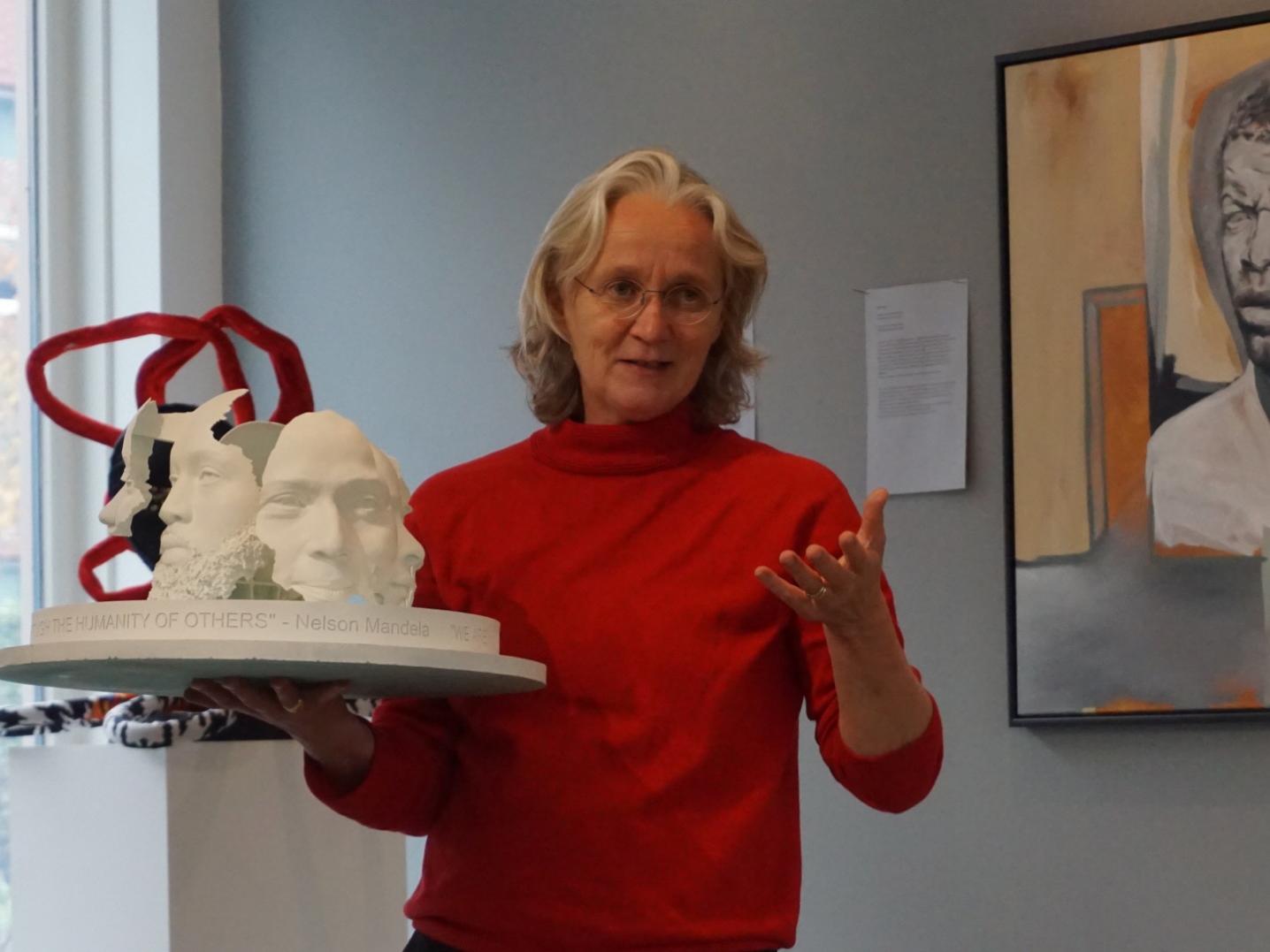
Become one
An important example of how CBK Zuidoost strives to truly represent the people from the community is the establishment of the Nelson Mandela monument in the park nearby. The entire process took four-and-a-half years. Zondervan: “The municipality of Amsterdam wanted to commission an artwork by a contemporary artist but had no idea what the people from the neighbourhood would want the memorial to look like.”
Therefore, CBK Zuidoost initiated a panel of five prominent locals to draw up a list of criteria that were important for them and their communities. CBK Zuidoost then asked three contemporary artists to submit a proposal on that basis. Eventually, the Zuidoost panel and a committee of the municipality selected the South African artist Mohau Modikaseng, who designed the beautiful concrete and bronze sculpture called Rona Batho (‘we the people’).
Although Mandela himself is not actually depicted in the artwork, his transformative effect on society is represented through six different large-scale faces and a famous quote by Mandela: “We are human through the humanity of others.” As a frequent local visitor enters the art space, Zondervan asks her what she thinks of the memorial. “All the different faces represent us; we all have to be one. If we unite and become one, the world will change,” she replies.
Dare to co-create
CBK Zuidoost is locally rooted but plays a significant role in the cultural ecosystem of the city. Zondervan: “For example, we work with the Amsterdam Museum. We invite artists like Iris Kensmil and Raquel van Haver to step out of their ‘art bubble’ and to create new work, in collaboration with the local community. We aim to incorporate different projects and works in our programmes.”
Reflecting on their methods and approach, Zondervan says: “For some institutions co-creation seems difficult, they might be afraid that the quality of the work will be inferior, but this is nonsense. It’s about being bold and questioning your own paradigms, and then you’ll be surprised with the result.”
With and for the neighbourhood
Near shopping centre Reigersbos, you’ll find broedplaats Kazerne Reigersbos based in a former fire brigade station. This creative hotspot was founded in March 2020 by Maru Asmellash. The property manager, Urban Resort, asked Asmellash to come up with an idea for the empty building. He grew up in the Reigersbos neighbourhood and asked himself: “If I don’t do it, who will?”
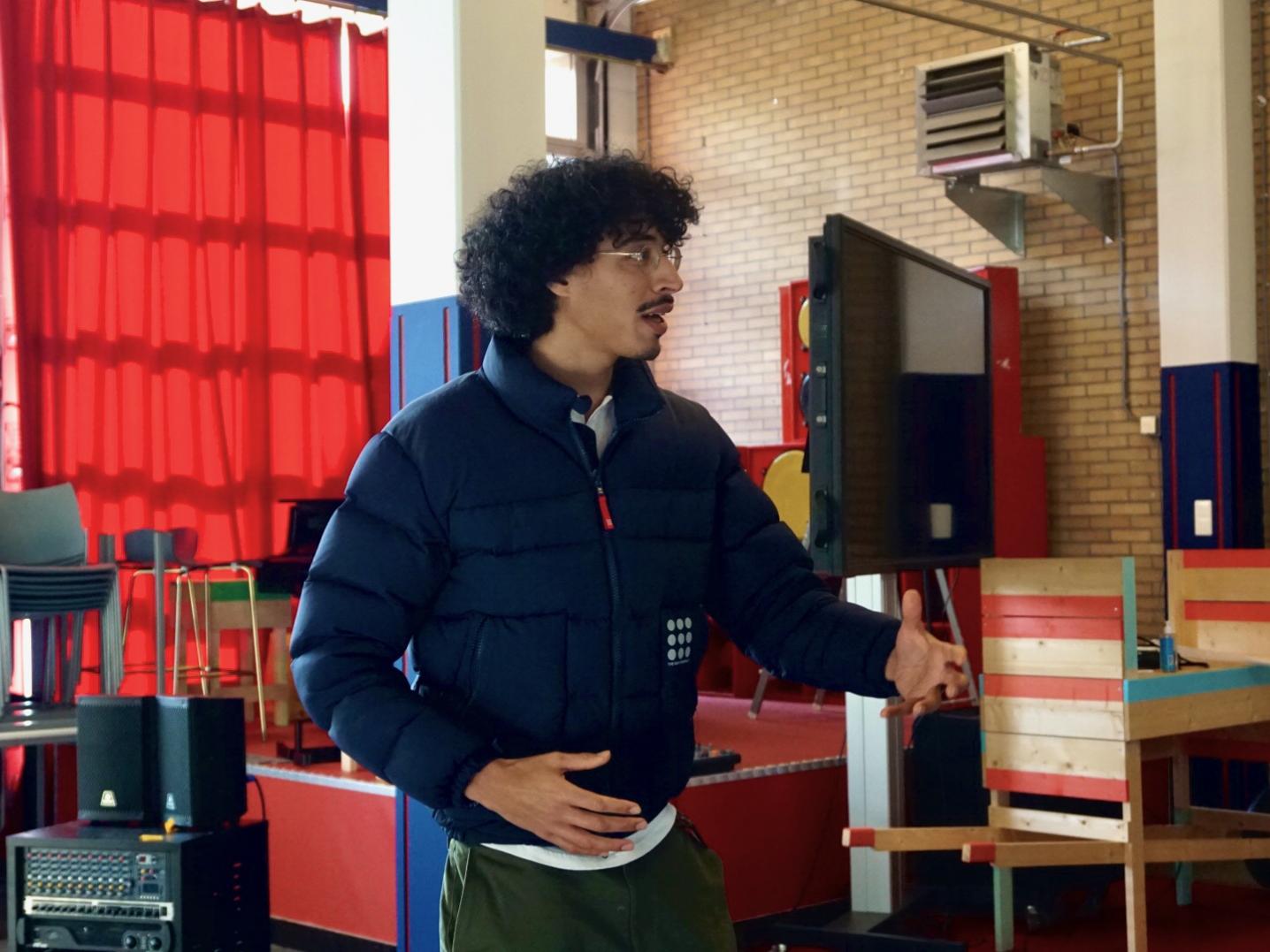
Besides being founder of the Kazerne, Asmellash is a creative entrepreneur and co-founder of the fashion brand The New Originals for performing artists, and part of the Zeedijk 60 collective. “It’s an unorthodox place,” admits Asmellash with a big smile on his face. “We are the only community centre in the area. Before the Kazerne opened, more than thirty thousand inhabitants of Zuidoost had no place to go for a cup of coffee or to meet with their neighbours.” Within two years, the Kazerne has become a hotbed for numerous weekly cultural and social activities, offering several working and rehearsal spaces, two music studios, a gym, a kitchen and a grand hall for bigger events and programmes. "We programme activities in line with the needs of the people in the neighbourhood, and together with them,” explains Asmellash.
It is an important place, especially for young creatives from Zuidoost. Asmellash: “We provide a platform for them to test the waters and to share their talent. Many of them are autodidacts, for instance in music. We provide music studios with basic equipment and facilitate the space and time for them to meet and to collaborate with others, and in that way empower their creativity.”
Tante Nel collects
Last year, Kazerne Reigersbos collaborated with the American fashion brand Timberland to start greening the concrete area around the building. In this city garden, the community is now able to grow its own plants and vegetables. “It’s mostly a place for people from the neighbourhood to meet and connect and to learn about gardening,” says Asmellash. Next to the garden, there’s Tante Nel’s corner (‘Aunt Nel’). Tante Nel is a common face in the neighbourhood who collects books, clothes and toys to give to others inside or outside the community who need it, and currently for people in Suriname.
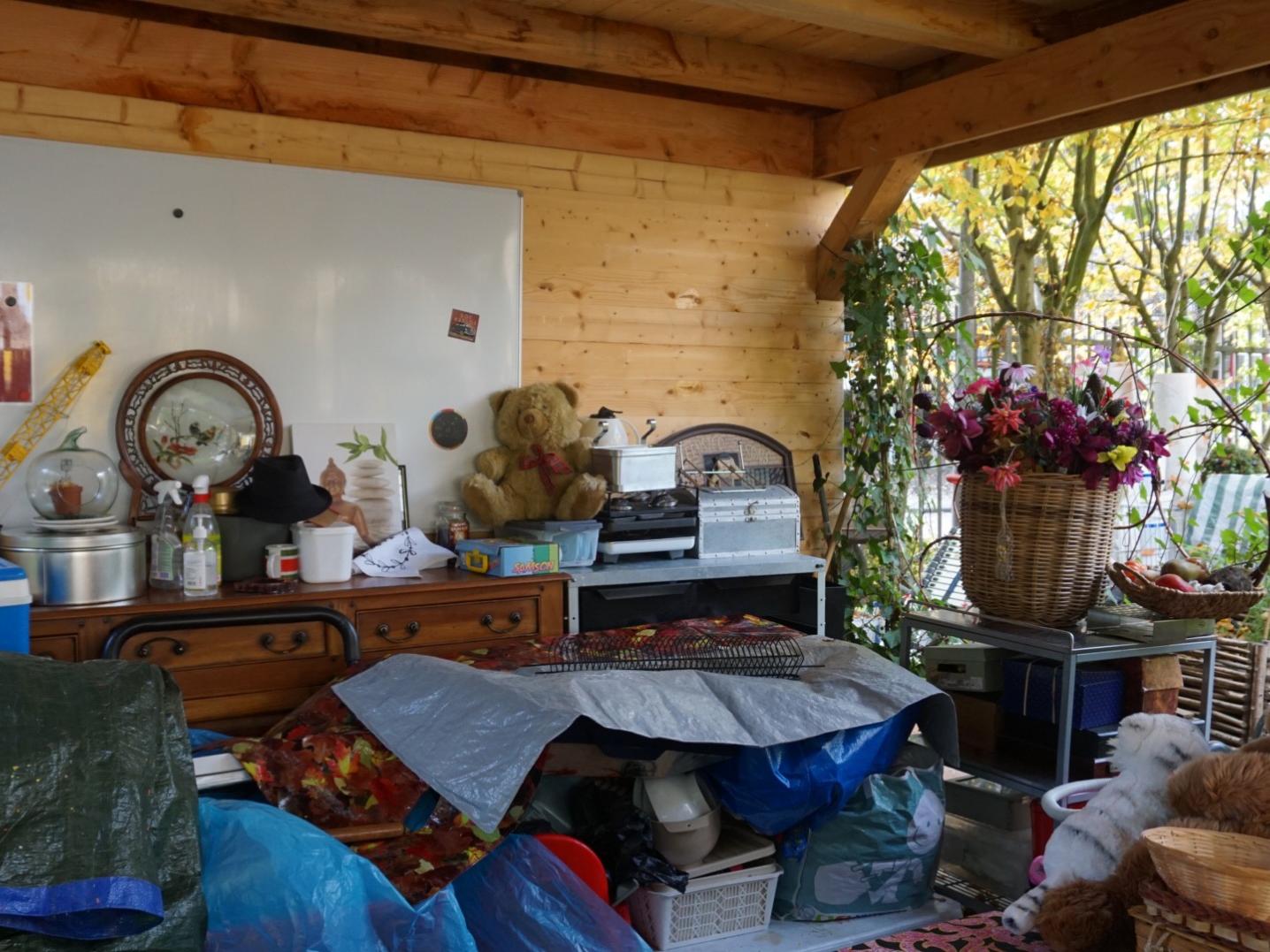
Future at risk
But the future and autonomy of the Kazerne are at risk. “We struggle to finance our activities. Our neighbourhood is under a lot of pressure,” says Asmellash. “In the next few years, over twenty thousand houses will be built so prices are increasing enormously. The municipal policy of the last decades has destructive effects on Amsterdam’s social and cultural worlds. Right now we are being confronted with the symptoms of so-called artification, which is an early stage of gentrification.”
The Kazerne has a rental license for another three years and is currently talking with the municipality of Amsterdam about its future. “This building will be torn down, I am not going to fight for these bricks anymore. But I want us to at least have a seat at the table, we want to be involved in plans for the future on a continuous and comprehensive basis.” Asmellash proposes so-called neighbourhood notaries with a personal connection to Reigersbos who will hold regular consultations with the municipality to give them input for future policy. Soon, Kazerne Reigersbos will publish a manifesto with their demands and wishes for the social and cultural future of their neighbourhood.
Continue listening
To conclude the day, the Zuidoost group met again with the Nieuw-West group for dinner in Amsterdam-Noord. While enjoying a tasty meal at MOK, the participants exchanged their experiences and impressions of the day. The tour through Amsterdam Zuidoost showed successful practices of cultural and societal co-creation, initiated by organisations that have been rooted in the neighbourhoods for decades on the one hand and run and re-shaped by the likes of Maru Asmellash and other youthful creatives on the other. The importance of creating space for new or unheard voices, inviting people to tell their own stories and actually start listening to the needs and wishes of local communities was emphasised throughout the day. Even though they are based on specific local examples in Amsterdam, these lessons are relevant for co-creation in a wide variety of international contexts.
DutchCulture will continue to highlight practices and challenges of co-creation initiated or pioneered by young artists and changemakers around the world.
